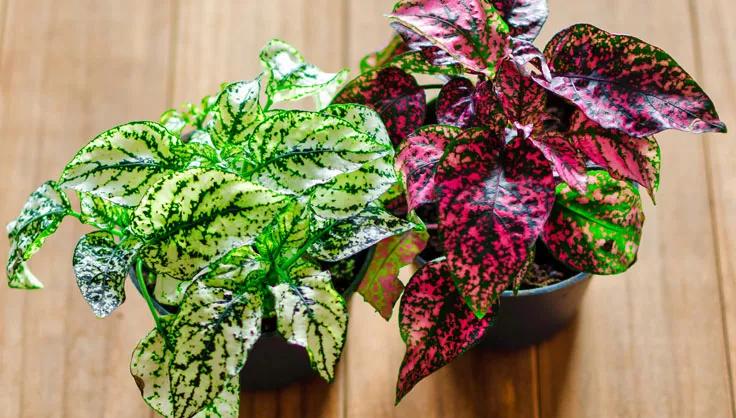How to Care for Polka Dot Plants

Choosing Your Polka Dot Plant
The classic pink Polka Dot Plant is a great starter for beginners. For those looking for something different, ‘Red Splash’ or ‘White Splash’ offer a striking variation in leaf coloring.
How to Care for Polka Dot Plants
Light
Polka Dot Plants thrive in bright, indirect light. Too much direct sunlight can fade their vibrant colors, while too little light can cause them to lose their signature spots. A spot near an east or west-facing window is ideal.
Soil
A well-draining, peat-based potting mix is perfect. You can make your own by mixing potting soil with peat and perlite or vermiculite. Good drainage is crucial to prevent root rot.
Fertilizer
Feed your Polka Dot Plant with a diluted, balanced liquid fertilizer every 4-6 weeks during the growing season (spring and summer). Reduce feeding in the fall and winter.
Watering
Water when the top inch of soil feels dry. Polka Dot Plants prefer consistent moisture but don’t like to be waterlogged. Reduce watering in the winter months.
Pruning
Regular pruning helps maintain a bushy, full appearance. Pinch off the tips of the stems, especially if the plant starts to become leggy.
Repotting
Repot your Polka Dot Plant every year or when it becomes root-bound. Spring is the best time for repotting, as the plant will be entering its active growth period.
Propagation
Propagating Polka Dot Plants is easy through stem cuttings. Simply snip a stem, remove the lower leaves, and place it in water or moist soil. Roots will form in a few weeks.
Common Problems with Polka Dot Plants
Pests and Diseases
Be vigilant about pests like aphids, spider mites, and whiteflies. Treat infestations with insecticidal soap or neem oil. Overwatering can lead to root rot, so ensure your potting mix is well-draining.
Toxicity
Polka Dot Plants are generally considered non-toxic to pets and humans, making them a safe choice for households with furry friends or children.
Polka Dot Plant FAQs
Why is my Polka Dot Plant losing its vibrant colors?
Diminished coloration can result from inadequate light or excessive direct sunlight. Find a balance with bright, indirect light to maintain their vibrant hues.
Can Polka Dot Plants be grown outdoors?
In warm climates, they can thrive outdoors in shaded areas. However, they are typically grown as indoor plants due to their sensitivity to temperature changes.
How do I keep my Polka Dot Plant from getting leggy?
Regular pruning and ensuring adequate light can prevent your Polka Dot Plant from becoming leggy. Pinching off the tips encourages bushier growth.
Caring for a Polka Dot Plant is an enjoyable and rewarding experience. With their distinctive spotted leaves and range of colors, they're sure to brighten any indoor space.
Print this Article:
Get the Dirt
Stay up to date on new articles and advice. Please fill out the information below.
